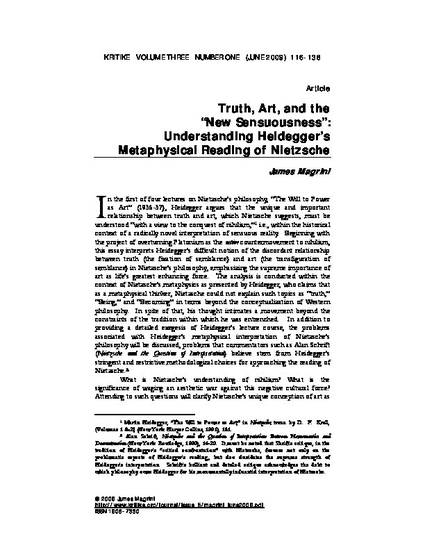
This article takes a critical look into Heidegger’s reading of Nietzschean metaphysics in the context of art and finds certain discrepancies in Heidegger’s texts. Heidegger’s claim is that Nietzsche has had some difficulty in discussing the problem of truth, being, and becoming in terms of how the Western tradition of philosophy has understood it. In the context of art, Magrini traces the path that Heidegger took in understanding Nietzsche’s notion of nihilism and finds that Heidegger’s reading of Nietzsche is actually an attempt to elevate the latter as a timely philosophical force whose thought moves away from the rote and dogmatic tradition of Western philosophy. Magrini is also able to point out that Heidegger’s reading moves through the usual rational and structured philosophy via a sensuous use of metaphors that is much closer to life, which is a noticeable change in the writing style of Heidegger from his Nachlass lectures and his posthumous work the Beiträge zur Philosophie. Despite some misgivings, Magrini lauds Heidegger’s work as a strict close reading of Nietzsche that brings out the best of the thinker’s radical thoughts.